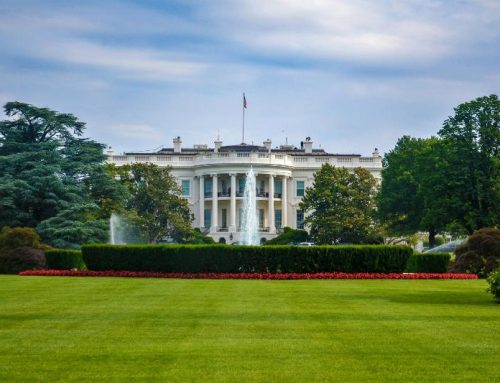We have a global garbage epidemic and our oceans are full of plastic crap. About 100 million tons of plastic trash circulates in the Pacific Ocean gyres between California and Japan. Today there is no commercially viable way to clean up the mess.
The trailblazers at eco consumer brand Method soap embarked on a three-way partnership to collect, recycle and market some of the ocean plastic garbage that’s currently contaminating Hawaii’s pristine beaches.
Method is working with grassroots environmental group Sustainable Coastlines, recycler Envision Plastics and retailer Whole Foods to transform plastic trash collected from beaches into new packaging material for their products.
Prominent blue product tags read “bottle made from ocean plastic“ and unfold to reveal info on the recycled origins of the bottle. The logo is a sea creature shaped from a kaleidoscopic array of plastic detritus — a telling symbol of what really happens to much of the plastic we use.
For prospective buyers, soap is just soap, until it’s not. Method’s soap bottle and label create a connection between consumers and what would otherwise be an anonymous raw material. The brand’s supply chain transparency augments the value of the core product by telling an environmental story.
By embedding the packaging material with positive environmental attributes, Method increases its appeal to a growing majority of eco-conscious consumers. A recent study confirmed that 71% of us consider the environment when making purchasing decisions. This is up from 62% a few years ago.
While the majority of consumers are hungry for increasingly detailed information on a product’s social and environmental benefits, major eco hypocrisy emerges at the end of a product’s useful life. Only 42% of consumers “dispose of products in a way that fulfills the intended environmental benefit.“
Pulling plastic off beaches in Hawaii to make bottles is interesting. It helps raise basic public awareness of a major problem. However, the realities of consumer behavior and the cycle of plastic pollution mean that it’s really just an example of using trash to make more trash.
HALF A HEMISPHERE AWAY IN HAITI, THREAD IS TAKING A DIFFERENT APPROACH. THREAD WANTS TO CHANGE THE WAY WE THINK ABOUT PLASTIC FOREVER.
What if Method’s recycled bottle could tell both an environmental and a human story? Not just where did the plastic come from, but who did it help and how? Thread recycles would-be ocean plastic in Port-au-Prince, Haiti. It’s one of the poorest and most polluted places in the world. The environmental and social benefits attached to Thread’s product position the company to make some serious waves in the consumer products world.
For the past few months, I have been working alongside the Thread team as a sustainability adviser. The work uses lifecycle impact assessment techniques to help measure and market Thread’s environmental attributes. It takes a disciplined, scientifically-grounded approach to draw accurate conclusions about a material’s environmental benefits — even one that appears squeaky clean. Then there’s the marketing side. Measuring and reporting is meaningless unless we can create value for Thread and for the brands that use the material.
On a recent trip to Port-au-Prince with Thread’s founder, I met with some of Thread’s staff and partners to begin documenting the company’s processes. My initial goal was to lend a hand with carbon-related calculations. Right away, I learned that environmental impact is just one piece of an inspiring story.
The Thread team believes that the intrinsic value of their product is the power to reshape the human experience for people living in extreme poverty. For leading consumer products brands like Method, there is an incredible story just waiting to be told.
FROM A LIFECYCLE PERSPECTIVE, THREAD OFFERS FOUR KEY SUSTAINABILITY ADVANTAGES COMPARED WITH OTHER SOURCES OF RECYCLED PLASTIC:
- Thread intercepts vast amounts of plastic trash before it ever reaches the ocean. Along with partners Ramase Lajan, and Haiti Recycling, plastic is collected and processed in Port-au-Prince, cleaning up the streets and canals, and keeping plastic waste from ever reaching the ocean.
- Thread “upcycles“ garbage into higher grade consumer products, not just more trash.
- Thread’s Haitian plastic is right in our backyard, ready to support the resurgence of “Made In The USA“ while reducing the total carbon footprint of finished goods at many steps along the supply chain.
- Thread sells socioeconomic impact, in addition to environmental benefits.
CHALLENGING BRANDS TO TELL THE WHOLE STORY
The Thread team knows exactly where their product is coming from and, in many cases, who collected it. As the raw material moves through Thread’s collection network, GDP is created in Haiti, a place where over 70% of the population lives on less than $2 a day. Technology allows Thread to share live data with partners. Today it’s a google doc charting incoming bottles by weight and location. Tomorrow’s solutions will use GPS tracking, webcams (and whatever else they dream up).
It’s a simple relationship. Haiti needs reliable local jobs to help people afford clean water, education, dignified housing, health care and food. Thread delivers. It will be in success stories, pictures and videos that we’ll see why Haiti needs Thread and Thread needs Haiti.
Thread keeps plastic out of oceans, provides jobs that help people out of poverty, and reduces the carbon intensity of manufacturing. Most importantly, consumers can hold brands to a higher standard by accessing transparent information on the product’s impact on people and communities. Look for a blue tag that reads “Who did this product help, and how?“ coming to a beloved brand near you.
Adam Freedgood is a sustainable business consultant and co-founder of Third Partners, a New York-based firm that helps organizations optimize long-term profitability through strategies that create new revenue opportunities, reduce waste and improve environmental performance.






